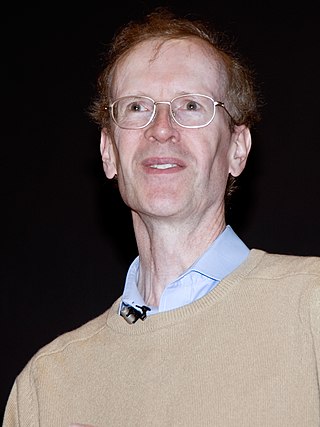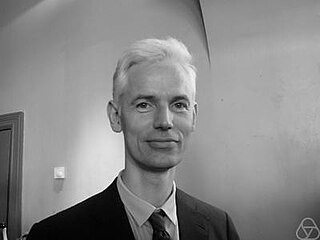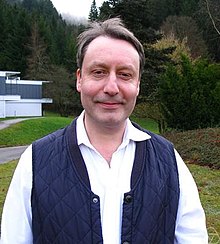
Sir Andrew John Wiles is an English mathematician and a Royal Society Research Professor at the University of Oxford, specialising in number theory. He is best known for proving Fermat's Last Theorem, for which he was awarded the 2016 Abel Prize and the 2017 Copley Medal and for which he was appointed a Knight Commander of the Order of the British Empire in 2000. In 2018, Wiles was appointed the first Regius Professor of Mathematics at Oxford. Wiles is also a 1997 MacArthur Fellow.

Sir William Timothy Gowers, is a British mathematician. He is Professeur titulaire of the Combinatorics chair at the Collège de France, and director of research at the University of Cambridge and Fellow of Trinity College, Cambridge. In 1998, he received the Fields Medal for research connecting the fields of functional analysis and combinatorics.

Béla Bollobás FRS is a Hungarian-born British mathematician who has worked in various areas of mathematics, including functional analysis, combinatorics, graph theory, and percolation. He was strongly influenced by Paul Erdős from the age of 14.

Sir Simon Kirwan Donaldson is an English mathematician known for his work on the topology of smooth (differentiable) four-dimensional manifolds, Donaldson–Thomas theory, and his contributions to Kähler geometry. He is currently a permanent member of the Simons Center for Geometry and Physics at Stony Brook University in New York, and a Professor in Pure Mathematics at Imperial College London.

Nigel James Hitchin FRS is a British mathematician working in the fields of differential geometry, gauge theory, algebraic geometry, and mathematical physics. He is a Professor Emeritus of Mathematics at the University of Oxford.

Ben Joseph Green FRS is a British mathematician, specialising in combinatorics and number theory. He is the Waynflete Professor of Pure Mathematics at the University of Oxford.

David William Masser is Professor Emeritus in the Department of Mathematics and Computer Science at the University of Basel. He is known for his work in transcendental number theory, Diophantine approximation, and Diophantine geometry. With Joseph Oesterlé in 1985, Masser formulated the abc conjecture, which has been called "the most important unsolved problem in Diophantine analysis".

Dusa McDuff FRS CorrFRSE is an English mathematician who works on symplectic geometry. She was the first recipient of the Ruth Lyttle Satter Prize in Mathematics, was a Noether Lecturer, and is a Fellow of the Royal Society. She is currently the Helen Lyttle Kimmel '42 Professor of Mathematics at Barnard College.

Ian Grant Macdonald was a British mathematician known for his contributions to symmetric functions, special functions, Lie algebra theory and other aspects of algebra, algebraic combinatorics, and combinatorics.

Bryan John Birch FRS is a British mathematician. His name has been given to the Birch and Swinnerton-Dyer conjecture.

Vitali Davidovich Milman is a mathematician specializing in analysis. He is a professor at the Tel Aviv University. In the past he was a President of the Israel Mathematical Union and a member of the “Aliyah” committee of Tel Aviv University.

Graeme Bryce Segal FRS is an Australian mathematician, and professor at the University of Oxford.

Chandrashekhar B. Khare, is a professor of mathematics at the University of California Los Angeles. In 2005, he made a major advance in the field of Galois representations and number theory by proving the level 1 Serre conjecture, and later a proof of the full conjecture with Jean-Pierre Wintenberger. He has been on the Mathematical Sciences jury for the Infosys Prize from 2015, serving as Jury Chair from 2020.

Peter Gavin Hall was an Australian researcher in probability theory and mathematical statistics. The American Statistical Association described him as one of the most influential and prolific theoretical statisticians in the history of the field. The School of Mathematics and Statistics Building at The University of Melbourne was renamed the Peter Hall building in his honour on 9 December 2016.

Alan Baker was an English mathematician, known for his work on effective methods in number theory, in particular those arising from transcendental number theory.

Mladen Bestvina is a Croatian-American mathematician working in the area of geometric group theory. He is a Distinguished Professor in the Department of Mathematics at the University of Utah.

Sir Martin Hairer is an Austrian-British mathematician working in the field of stochastic analysis, in particular stochastic partial differential equations. He is Professor of Mathematics at EPFL and at Imperial College London. He previously held appointments at the University of Warwick and the Courant Institute of New York University. In 2014 he was awarded the Fields Medal, one of the highest honours a mathematician can achieve. In 2020 he won the 2021 Breakthrough Prize in Mathematics.

Daniel T. Wise is an American mathematician who specializes in geometric group theory and 3-manifolds. He is a professor of mathematics at McGill University.

Franck Barthe is a French mathematician. He was awarded the European Congress of Mathematics (ECM) prize in 2004. He is working as a professor of mathematics at Paul Sabatier University.

Shiri Artstein-Avidan is an Israeli mathematician who in 2015 won the Erdős Prize. She specializes in convex geometry and asymptotic geometric analysis, and is a professor of mathematics at Tel Aviv University.




















